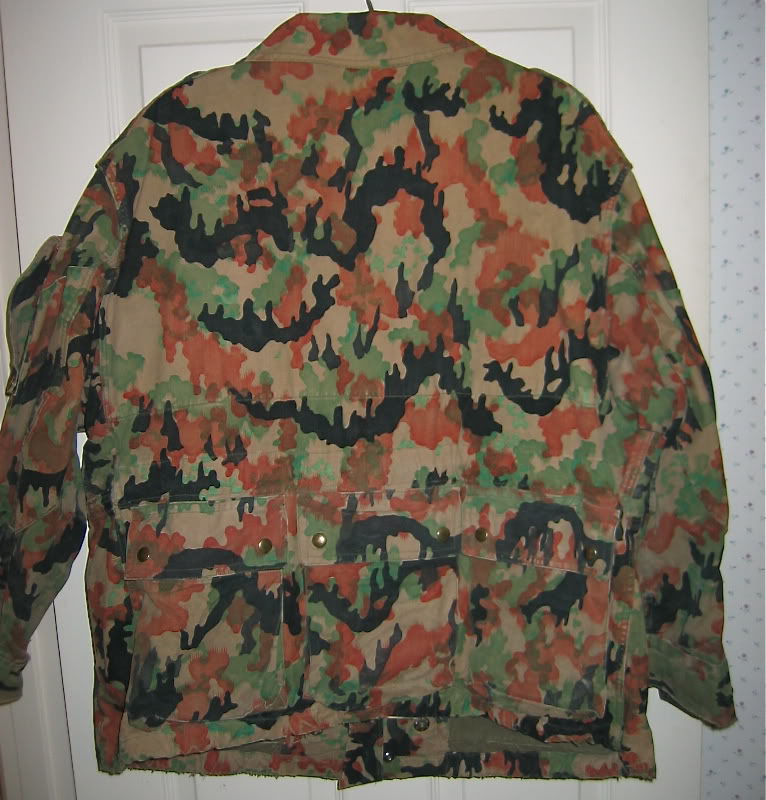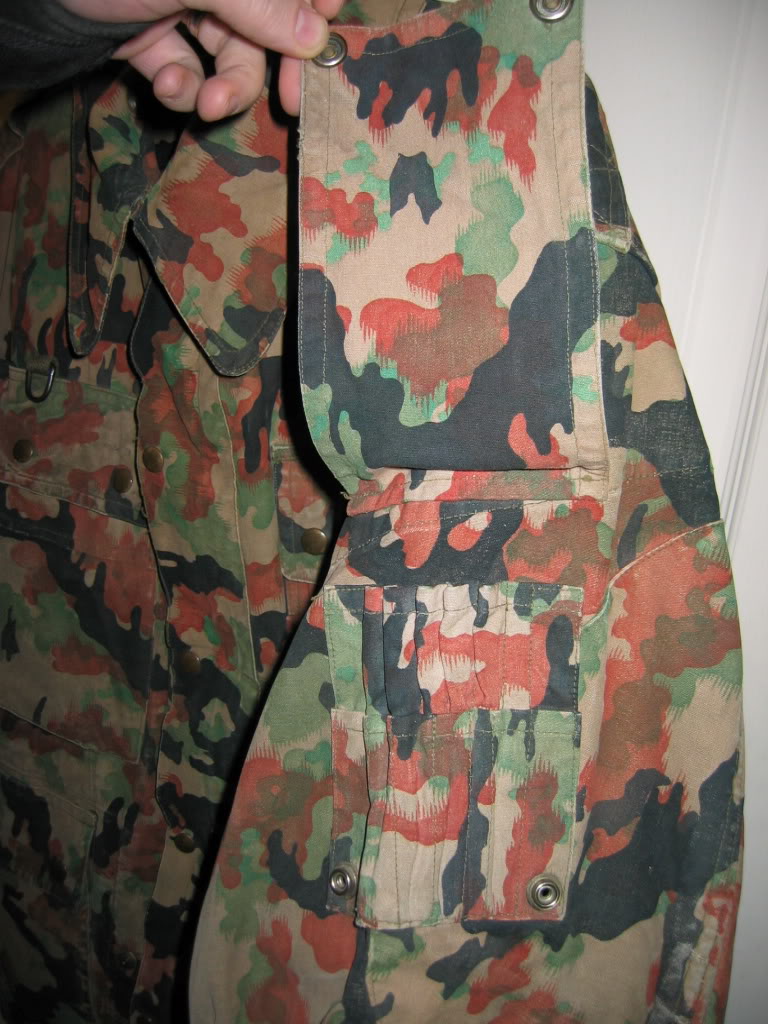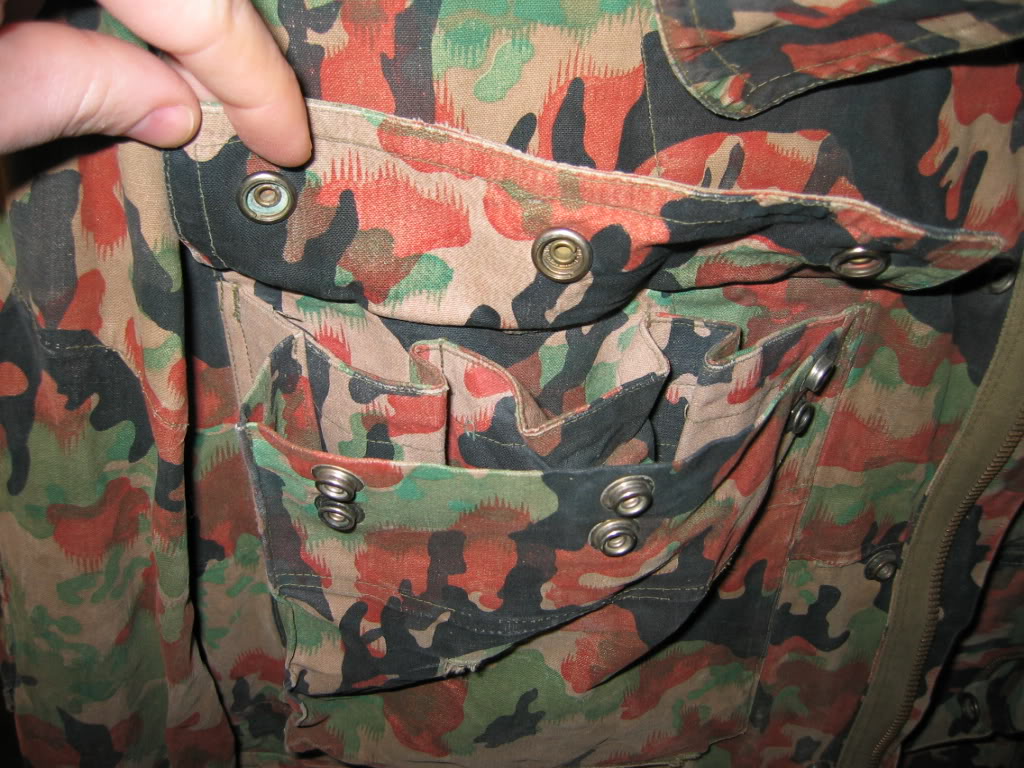If I've read the labels correctly the contract was set forth on November 30, 1954 and actually produced in 1955. Presumably early 1955 since the pattern was already dropped in early 1955 in favor of Splittertarn, which apparently was either adopted and/or produced in June of 1955. Therefore, the actual use of the uniform for pre BW trials measured a few months at most.
I've examined the proposed EVG uniform (Europäischen Verteidigungsgemeinschaft) that was being trialed in and around 1953-1954. The EVG was the political/military organization that was designed to combine the armies of Western Europe into one, singular organization. Not only was it to be unified in terms of command and purpose, but it was also supposed to have a common field uniform based on the French TAP 47, probably because the French military was the only significant one on the continent at the time.
The EVG was effectively killed off on August 30, 1954 when France rejected ratification of the agreement (Germany had signed on in 1953). This was supposed to be the path for German rearmament, which was seen as critically important, so there was a scramble to get an alternative in place. This happened in October 1954 when the former EVG members, the US, Canada, and Britain agreed to incorporate Germany into NATO with some preconditions (similar to the ones France had about EVG). Germany officially ratified its membership in May 1955 (a 1957 source says March, but I've not reconciled the discrepancy).
The Leibermuster jacket is extremely similar to the EVG jacket, the trousers a tad less so. With the failure of the EVG it looks like Germany made a few minor modifications and had an experimental run made in Belgium, anticipating the actual creation of the Bundeswehr by a few months. The probable reasons why they went with the EVG pattern are simple; they were familiar with it and had nothing else to go with. What they probably did was incorporate some modifications from feedback from EVG trials (move a snap here, remove a tie there, etc.). Whatever the case may be, the fact is that the Leibermuster uniform is almost identical to the EVG uniform. The camouflage pattern must have been chosen quickly as well. Since almost nobody knew of this pattern, there was no way to associate it with the Waffen SS or Heer of WWII. It also came with the benefit of cutting the R&D time for pattern down to near zero. They might have even had access to the original screens, which again would have been a big benefit to them. I do, however, think they modified at least the black screen. Technically this would be the easiest of the screens to modify since it did not need to be lined up with the other colors. Modifying the dots would have required changes to three other screens, for example.
One explanation for why the uniforms were made in Belgium is that Germany was not legally allowed to create the uniforms yet. Technically they were not supposed to have an armed force other than the specifically authorized BGS and Polizei forces. Another explanation, possibly in addition to the previous one, is that Belgium got the business as part of war reparations. Germany produced poncho/shelters for Belgium in 1955, so there is a history of cross border cooperation during this period. My theory about the ABL mark on the tags is the company making them didn't want to retool their tags for an experimental run for a military that did not yet exist (i.e. there was no Bundeswehr tag format since there was no Bundeswehr yet).
So that's about all the info I've managed to dig up on this awesome bit of kit. And without further ado... the pics!








Enjoy!
Steve



 by
by 










